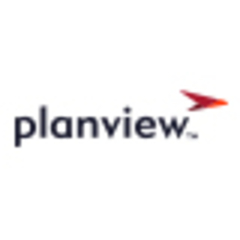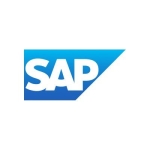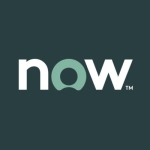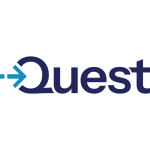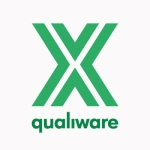What is our primary use case?
Our company has a PMO, which they use to intake their projects. They use the request module and do a process for the steering committee before its turned into a project. Once they turn it into a project, the project managers take it over and work the WBS all the way through to the end of the project.
The product is deployed on the Planview cloud.
How has it helped my organization?
With the lifecycles, it helps us step through our processes easier. We'll take a process and create it in Visio, then we'll go and implemented in Planview. Anytime that we have to do a new process, this is what we use. We just step it through the lifecycles and the configure screens are very easy to use. The fields that you need are easy to use.
With the prioritization that the company is getting into, it's easier to do that using this solution, including a ROM. Normally, the ROM is done in the work, but we put it in the request module. You don't have to have an in-depth ROM. You don't have to create a project, we just do it in a request module today, which has been very helpful.
For the delivery, we can tell when a project will be late, so the PM can find out why. The PM would have to tell management why it's going to be late, but they can see that right off because they do weekly status reports. So, they don't have to wait to get a status report. They can just go in there and look. Also, with the reporting capability, where they can do the subscriptions, they get it every Friday.
Resource managers can see their resources. They try to do things on their own, so that is good. Today, we don't have high-level resource management, but we are going to start doing that. We will start having demand or resource meetings to see where resources are available. However, we are still developing that.
We don't have that today, but I worked at other companies who used Planview and saw where resources were available, scheduled, and short. It was very useful. We would meet every two weeks to view resource management. We would just sit in a room and say, "These are our projects. These are the projects that are incoming. Where are our resources today? What are they working on?" So, it was very good.
The biggest impact has been the ability to see your resources and what they're working on. Most importantly is having your projects in one place. We don't have that specifically here at GM today, but we're working towards that. That's our new initiative: Get everything in one place and have one place to go for intake. So, if you have a new request, they go straight to plan B. Once we post a project, they can do that today. We get on reporting for Power BI and the ease of use of Power BI is very big.
What is most valuable?
It's easy to use compared to other platforms that I've worked on, e.g., Microsoft Project. Innotas was one of our contenders, but they ended up buying them, so it's good to see that those features are coming out across Enterprise One.
- I love the requested intake.
- I love how you can do calculations of fields.
- We put in the lifecycles, which I love.
- Love that you can get notifications within Outlook.
- The reporting: How you can do subscriptions of the reporting. So, you don't have to sit there and send reports manually. That's very helpful.
These features save me time. Anything that you can automate is always helpful. When somebody doesn't have to come and ask me, "Hey, can you do this for me?" They can do it themselves, then it's easy to use. You can show them one time, and they go through it the next time by themselves.
It's flexible and very easy to use. Just having all of our projects centralized and all our programs in one place so we can see what the PMs are working on. Now that we've gone global, we can bring in the other PMs and PMOs easily because we've already configured stuff. Although, they may have things that they're reporting on, we can easily integrate those into our current system.
What needs improvement?
I would suggest for the request module that they open up the fields and columns so it's like we are doing our work in the work module. You can't do that with today. We also have to make sure that the fields can go both ways with the request and work modules. Including fields in the column sets would be helpful, because today they only use attributes.
For the multiple fields that you have, there is not a single select field, but multiple selections. You can't use those in column sets today. It excludes those fields when being reported on. So, you have to figure out another way to do that.
It would be beneficial for us if it was able to integrate with other tools and have those tools integrated into Planview, which they're working on. Examples of tools being integrated DevOps, JIRA and Projectplace. Since we're a mature PMO, and not all of our PMOs are, if they can integrate with Projectplace or the Planview PPM Pro, that's good.
For how long have I used the solution?
The company has been on it for at least five years. I've used it previously with other companies for over seven years.
What do I think about the stability of the solution?
I have never had an issue with the stability of Planview. That's one thing that they can tout very well. Performance issues have not been an issue. When running a report, all I have to do is let them know, and they will expand my timeout limits. So, I've never had an issue with performance with them, not in the cloud.
What do I think about the scalability of the solution?
It's very scalable. We're on Enterprise One, so you normally have to be pretty mature. Where I came from, we were immature. We adapted to Planview and became very mature. I know that other companies can do that too. They start out with Projectplace or PPM Pro, then they'll go to Enterprise One. So, it's very scalable. It's a great solution for scalability.
How are customer service and technical support?
The technical support is very good. I've never had an issue with them. They answer their tickets right away and always come back with a solution very quickly.
Which solution did I use previously and why did I switch?
We moved from another tool to Planview. I don't know what tool this current company was on. I worked for them for 10 months, then I left and I came back. I've been with them since June again. Another company that I worked with, we went from MS Project Pro (the PPM tool) to Planview.
How was the initial setup?
It was more complex because I came from MS Project Pro. Planview has so much more to offer, so you had to consider a lot more. You had to figure out what its capability were, what your portfolio and programs were going to be, what your teams were, how they were structured, and what type of resources you had in what roles. So, there were things that we had to consider, but Planview asks the right questions. They bring that out of you.
We did a test for three months, then we did a soft launch. So, only our PMs were on it, and they brought all their projects over and managed their projects there. We had another tool, where we had to do double-duel entry for time sheets. So, when they ended their time sheet over there, then they started doing it in Planview. That was just to get them used to it, and saying, "We're going to do our time sheets." We were a company that already did time sheets. That seems to be a big thing for other companies. How do you get your people to do time sheets? But if you're doing financials, they're going to do time sheets.
What about the implementation team?
We used consultants, and I would recommend that for everyone. They're very easy to use. They listen to your needs and requirements. They gather them. They've been in the business so long that they understand what people are saying. Some people may want a lot of details, and they'll talk them down from that by saying, "Do you really need that? Let's start with this, and then we'll see. Does that give you what you need?" So, they're really good about listening to the requirements and providing what you need from the beginning.
When you talk to a consultant, make sure you know where you are, how many users you're going to have, what number of projects you have today, where you think you're going to go with it, and what are your pain points.
Know your pain points, and definitely tell Planview what your pain points are, because they'll have a solution for them, whether it's reporting, which is real big, or just the ease of use. Everybody is so used to using Microsoft Project, but it's really not that different from Microsoft Project. You just have to use the tool, like Word or Excel, and the more you use it, the better you get at it. It's a very good PPM tool.
The learning curve is not steep. They have very good training and a lot of people. My recommendation is when you take on Planview, get the training. Have trainers come onsite and make sure you budget for that. Make sure you budget for consultants to come onsite and train your people. Don't try to do it yourself, let them do it.
What was our ROI?
I think our company has seen ROI. If you can see where all your projects are, what type of projects you have, what resources that they're working on, and finally, where your budget is. That's a win-win, all the way.
What's my experience with pricing, setup cost, and licensing?
We have unlimited licenses for all of our functionalities. Since we went global, we went with that model.
Which other solutions did I evaluate?
We evaluated MS Project, because we thought we going to stay with them. We evaluated Planview and Innotas. There was another minor one too and we want to be more mature than that. Those were the main ones that we evaluated.
We chose Planview probably for the centralization of all the projects, ease of use, views, and the configured screens were very easy to use. Ours was more about resources, knowing where your resources are, for example:
"What projects are you working on?"
"I'm over here working on these five projects."
"But they're not on my list!"
This solution is just about able to see what your resources are working on and having all your projects in one place, even team schedules.
What other advice do I have?
We do not use the solution’s Lean/Agile delivery tools yet. That's one reason why we were looking at this heavily at the conference. They seem to be really focused on that, which is good. A lot of companies that I talked to seemed to be struggling with it, so it's good to see that Planview is trying to move into that direction, taking everything with it.
Today, Planview does not help connect funding and strategic outcomes with work execution because we only have one PMO which is using finances. I don't think that they're doing a capital budget yet, to say, "These are the projects that we're going to work on." But, as we've gone global, we will start doing that. So, it'd be very beneficial. The other company that I worked for, it was very highly used. We forecasted constantly to see where our budgets were, what our capital budget was for that year, and what projects we were going to work on at the beginning of the year. That was good.
There are so many different functionalities within it that you don't have to take in all in one day. You can just grow with it. So, that's what I like about it.
I'm always a person who will never give anything a 10. I would probably give it, compared to other tools, a nine (out of 10). I would've given it an eight (out of 10), but they've made improvements this year. So many good things are coming out, and they really listen to the customers. I'll give them a nine for that.
Disclosure: My company does not have a business relationship with this vendor other than being a customer.

